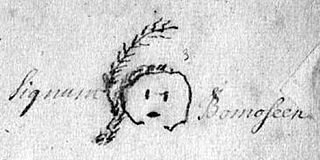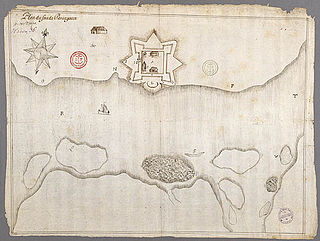Treaty of Casco (1703) was an unsuccessful attempt made by Governor Joseph Dudley of Massachusetts Bay Colony to prevent further Indian hostilities from breaking out along the northern frontier. War was already going on in Europe between England and France (see Queen Anne's War) and the eastern Indians were historically allies of New France, and had a close relationship with the French Jesuits.

Joseph Dudley was an English colonial administrator, a native of Roxbury, Massachusetts, and the son of one of its founders. He had a leading role in the administration of the Dominion of New England (1686–1689), which was overthrown in the 1689 Boston revolt. He served briefly on the council of the Province of New York where he oversaw the trial which convicted Jacob Leisler, the ringleader of Leisler's Rebellion. He then spent eight years in England in the 1690s as Lieutenant-Governor of the Isle of Wight, including one year as a Member of Parliament for Newtown. In 1702, he returned to New England after being appointed governor of the Province of Massachusetts Bay and Province of New Hampshire, posts that he held until 1715.

The Massachusetts Bay Colony (1628–1691) was an English settlement on the east coast of North America in the 17th century around the Massachusetts Bay, the northernmost of the several colonies later reorganized as the Province of Massachusetts Bay. The lands of the settlement were located in southern New England in Massachusetts, with initial settlements situated on two natural harbors and surrounding land, about 15.4 miles (24.8 km) apart—the areas around Salem and Boston.

Queen Anne's War (1702–1713) was the second in a series of French and Indian Wars fought in England's Thirteen American Colonies; in Europe, it is viewed as the North American theater of the War of the Spanish Succession. It was fought between France and England for control of the American continent, while the War of the Spanish Succession was primarily fought in Europe. The war also involved numerous American Indian tribes allied with each nation, and Spain was allied with France. It is also known as the Third Indian War or in France as the Second Intercolonial War. It was fought on three fronts:
- Spanish Florida and the English Province of Carolina attacked one another, and the English forces engaged the French based at Mobile, Alabama in a proxy war involving allied Indians on both sides. The southern war did not result in significant territorial changes, but it had the effect of nearly wiping out the Indian population of Spanish Florida, including parts of southern Georgia, and destroying the network of Spanish missions in Florida.
- The English colonies of New England fought against French and Indian forces based in Acadia and Canada. Quebec City was repeatedly targeted by British expeditions, and the Acadian capital Port Royal was taken in 1710. The French and Wabanaki Confederacy sought to thwart New England expansion into Acadia, whose border New France defined as the Kennebec River in southern Maine. Toward this end, they executed raids against targets in the Province of Massachusetts Bay, most famously the raid on Deerfield in 1704.
- English colonists based at St. John's, Newfoundland and Labrador disputed control of the island with the French based at Plaisance. Most of the conflict consisted of economically destructive raids on settlements. The French successfully captured St. John's in 1709, but the British quickly reoccupied it after the French abandoned it.
Governor Dudley appointed a meeting of the several chiefs and their tribes to confer with him and his councilors to reconcile whatever differences had arisen since the last treaty. They met in New Casco, Maine (present day Falmouth, Maine), June 20, 1703. [1] The Indians made the customary professions of peace, disavowing any conspiracy with the French to exterminate the English. They then presented the governor with a belt of wampum and ended the ceremony with an exchange of volleys.

Falmouth is a town in Cumberland County, Maine, United States. The population was 11,185 at the 2010 census. It is part of the Portland–South Portland–Biddeford, Maine metropolitan statistical area.

Wampum is a traditional shell bead of the Eastern Woodlands tribes of American Indians. It includes the white shell beads hand fashioned from the North Atlantic channeled whelk shell and the white and purple beads made from the quahog or Western North Atlantic hard-shelled clam.
The Treaty caused concern for the French, as it left them vulnerable in Acadia. Accordingly, Jacques-François de Monbeton de Brouillan, Governor of Acadia, urged the Governor of New France, Philippe de Rigaud, Marquis de Vaudreuil, to send a force to instigate hostilities between the Native Tribes and New England. Vaudreuil was equally concerned about losing control of the Kennebec-Chaudiere river system, which led to Quebec City. He raised a force of Canadians and Iroquois. In August 1703, this force, accompanied by a band of Abenakis, raided the New England frontier from Casco to Wells, killing or taking prisoner some 160 people. Further attacks were made during the autumn. The raids came as a complete surprise to New England. Governor Dudley responded by declaring war on the Abenakis, and offering £40 in scalp money. [2]
Jacques-François de Monbeton de Brouillan French military officer and Governor of Plaisance (Placentia), Newfoundland (1689-1701) and Acadia (1701-1705).









